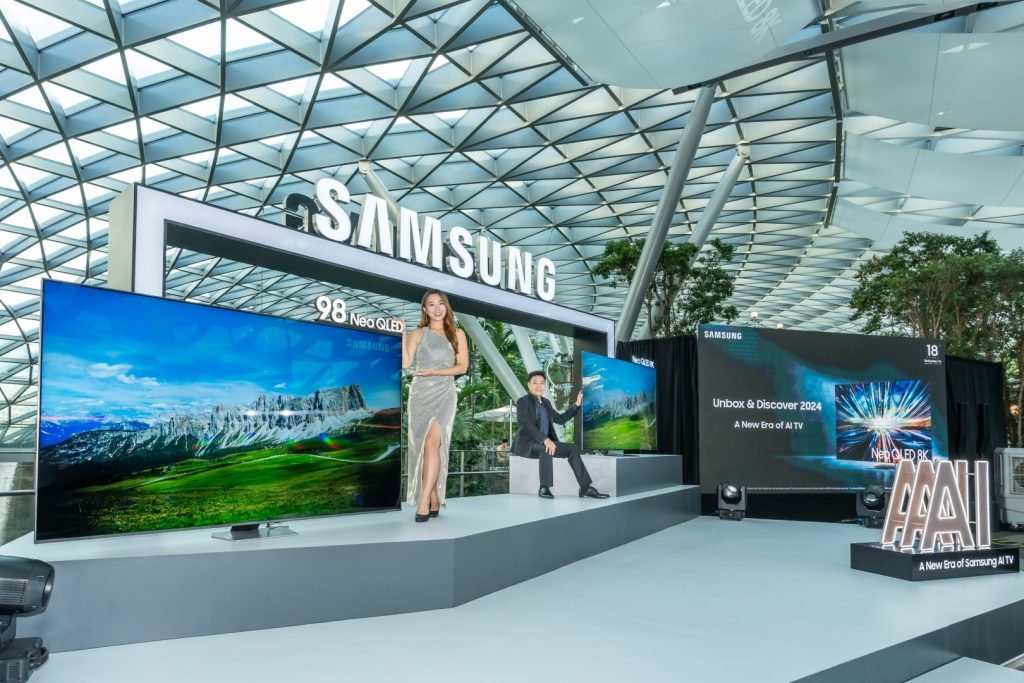Samsung has long been at the forefront of display technology shaping how we experience visuals in our everyday lives. Among its notable advancements are AMOLED (Active Matrix Organic Light Emitting Diode) and QLED (Quantum Dot Light Emitting Diode) technologies. In this article we will explore these groundbreaking technologies, their benefits and how Samsung has pushed the boundaries of display innovation.
What is AMOLED?
AMOLED stands for Active Matrix Organic Light Emitting Diode. It is a type of display technology that uses organic compounds to produce light when an electric current is applied. Unlike traditional LCDs (Liquid Crystal Displays) which rely on a backlight to illuminate pixels, AMOLED displays generate their own light at the pixel level.
How AMOLED Works
AMOLED screens consist of an array of organic compounds sandwiched between two layers of electrodes. When voltage is applied these organic materials emit light allowing each pixel to illuminate independently. This means that AMOLED displays can produce true blacks by turning off pixels entirely resulting in higher contrast ratios and more vibrant colors.
Advantages of AMOLED
- Vivid Colors and High Contrast: AMOLED displays are known for their rich colors and deep blacks thanks to their ability to control individual pixels.
- Better Power Efficiency: Since black pixels are turned off AMOLED screens can be more power-efficient especially when displaying dark content.
- Flexible Design: The technology allows for flexible and curved displays enabling innovative designs in smartphones and wearable devices.
Applications of AMOLED
AMOLED technology is prevalent in high-end smartphones, tablets , smartwatches and even some televisions. Its vibrant display quality and flexibility make it ideal for devices where screen quality is paramount.
What is QLED?
QLED stands for Quantum Dot Light Emitting Diode. This technology uses quantum dots nanometer-sized semiconductor particles that emit light when illuminated by a backlight. Unlike OLED (Organic Light Emitting Diode) which emits its own light, QLED displays rely on a backlight to illuminate the quantum dots.
How QLED Works
QLED screens use a layer of quantum dots placed in front of a traditional LED backlight. These quantum dots emit precise colors when excited by the backlight enhancing the color accuracy and brightness of the display. This results in vivid colors and high brightness levels even in well-lit environments.
Advantages of QLED
- Enhanced Brightness: QLED displays can achieve higher brightness levels compared to AMOLED making them suitable for brightly lit rooms.
- Superior Color Accuracy: The quantum dots in QLED technology offer excellent color reproduction covering a wide range of colors.
- Longevity: QLED screens generally have a longer lifespan compared to OLEDs as they are less prone to burn-in issues.
Applications of QLED
QLED technology is primarily used in high-end televisions where superior brightness and color accuracy are essential. It’s also gaining popularity in monitors and larger displays.
Comparing AMOLED and QLED
Image Quality
- AMOLED: Provides deeper blacks and higher contrast ratios making it excellent for viewing in dark environments.
- QLED: Offers brighter displays and more accurate colors making it ideal for well-lit rooms and daylight viewing.
Power Efficiency
- AMOLED: More power-efficient when displaying dark content due to pixel-level illumination.
- QLED: Generally consumes more power due to its reliance on a constant backlight.
Durability
- AMOLED: Prone to screen burn-in over time where static images can persist on the screen.
- QLED: Less prone to burn-in making it more durable for varied content display.
Samsung’s Contribution to Display Innovation
Advancements in AMOLED
Samsung has been a pioneer in AMOLED technology continually improving its performance and applications. Their advancements include:
- Higher Resolution Screens: Samsung’s AMOLED displays are now available in ultra-high-definition resolutions enhancing visual clarity.
- Flexible Displays: The introduction of curved and foldable AMOLED screens has revolutionized device design.
Pioneering QLED Innovations
Samsung has also been a leader in QLED technology pushing the envelope with:
- 8K Resolution: Samsung has developed QLED TVs with 8K resolution offering an unparalleled level of detail and clarity.
- Quantum Dot Technology: Innovations in quantum dot technology have led to more accurate color reproduction and better HDR (High Dynamic Range) performance.
The Future of Display Technology
The future of display technology holds exciting possibilities with ongoing research and development promising even greater advancements. Both AMOLED and QLED technologies are expected to continue evolving with potential improvements in efficiency, color accuracy and durability.
Emerging Trends
- MicroLED: An emerging technology that combines the benefits of OLED and QLED offering high brightness, excellent color accuracy and no burn-in issues.
- Foldable Displays: Further advancements in AMOLED technology are likely to lead to more versatile and durable foldable screens.
Conclusion
Visit this site to learn how Samsung’s innovation in AMOLED and QLED technologies has significantly advanced the way we experience visual media. Visit this site to explore how AMOLED’s ability to deliver deep blacks and vibrant colors has revolutionized mobile and wearable devices while QLED’s superior brightness and color accuracy have set new standards for televisions and large displays.
